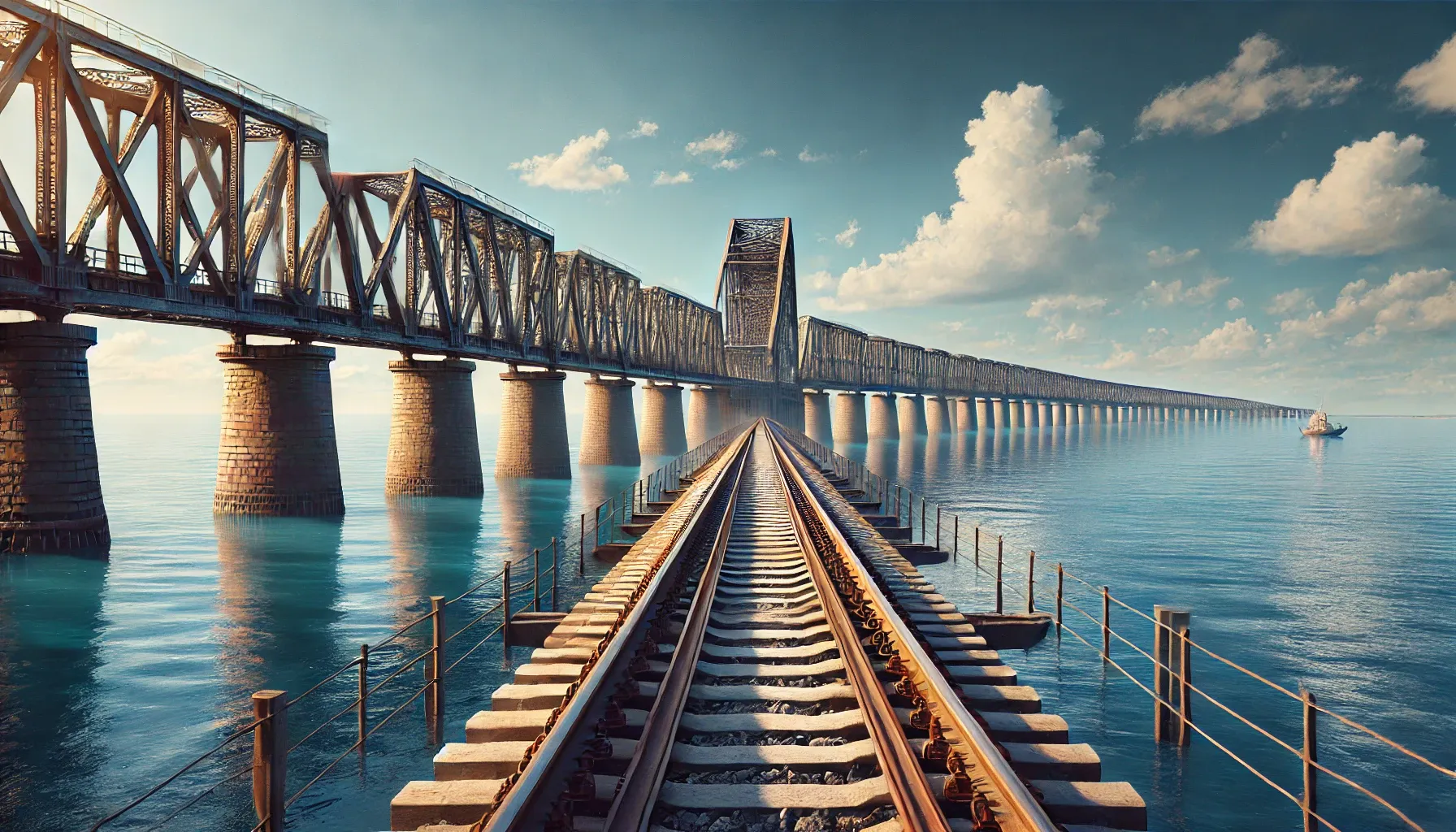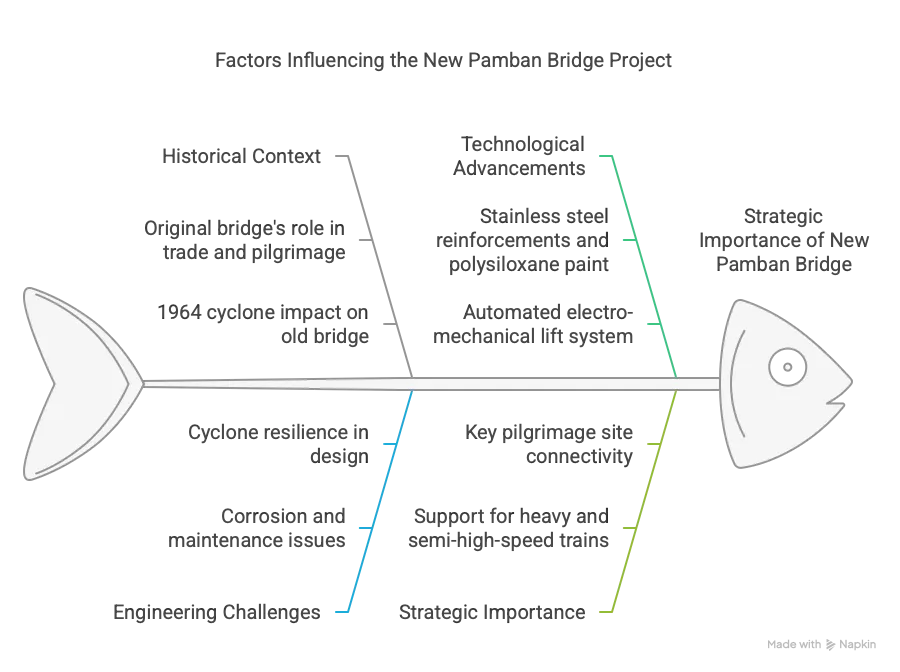UPSC
Indian Express Concise
New Pamban Bridge: Engineering Resilience and Historical Lessons
Last Updated
3rd April, 2025
Date Published
3rd April, 2025
Share This Post With Someone

Published on April 2, 2025, in The Indian Express, this article details the development of India’s first vertical lift railway sea bridge, the New Pamban Bridge, replacing the century-old structure damaged by the 1964 cyclone. It connects mainland India to Rameswaram, offering insights into infrastructure development, disaster resilience, and technological advancements critical for understanding India’s progress in civil engineering and disaster management.

Key Points
- Inauguration Date: The New Pamban Bridge is set to be inaugurated by Prime Minister Narendra Modi on April 6, 2025, coinciding with Ram Navami.
- Historical Context: The original Pamban Bridge, opened in 1914, was India’s first sea bridge, facilitating trade and pilgrimage between Rameswaram and the mainland for over a century.
- 1964 Cyclone Impact: On December 23, 1964, the Rameswaram cyclone struck, washing away the Pamban-Dhanushkodi passenger train (Train No. 653) with over 200 passengers, flattening Dhanushkodi, and damaging the bridge.
- Old Bridge Features: The 2.065 km-long original bridge had a double-leaf bascule section with a Scherzer rolling lift span, manually raised to allow ships to pass, connecting Mandapam to Pamban Island.
- Construction History: Built between 1911 and 1914 under British rule, it supported Indo-Ceylon trade via Dhanushkodi and Talaimannar ports until the cyclone destroyed the route.
- Post-Cyclone Recovery: Engineer E. Sreedharan restored the damaged bridge within 46 days, showcasing rapid disaster response, though Dhanushkodi remained abandoned.
- Old Bridge Challenges: Corrosion, high maintenance costs, and operational difficulties due to its marine environment prompted its replacement.
- New Bridge Construction: Initiated in 2019 with the foundation stone laid by PM Modi, the 2.08 km-long New Pamban Bridge stands 3 meters higher than its predecessor.
- Design Specifications: It features 99 spans of 18.3 meters each and a 72.5-meter vertical lift span, rising up to 17 meters to allow larger vessels to pass, with dual tracks for enhanced capacity.
- Technological Advancements: Built with stainless steel reinforcements, polysiloxane paint, and an automated electro-mechanical lift system, it withstands harsh marine conditions.
- Lifespan: The new bridge is designed for a 58-year lifespan, ensuring long-term durability in a corrosive, cyclone-prone region.
- Capacity Upgrade: It supports heavy freight trains and semi-high-speed trains like Vande Bharat, unlike the old bridge’s limited metre-gauge line (upgraded to broad gauge in 2007).
- Strategic Importance: The bridge enhances connectivity between mainland India and Rameswaram, a key pilgrimage site, replacing the old bridge decommissioned in December 2022.
- Engineering Marvel: Touted as India’s first vertical lift railway sea bridge, it reflects modern engineering tailored to environmental challenges.
- Cyclone Resilience: The 1964 disaster underscored the need for robust infrastructure; the new bridge’s design addresses cyclone and corrosion risks.
Glossary
- Pamban Bridge: India’s first sea bridge, originally built in 1914, connecting Mandapam to Rameswaram.
- 1964 Rameswaram Cyclone: A devastating storm that destroyed Dhanushkodi and damaged the original bridge.
- Vertical Lift Bridge: A bridge with a central span that rises vertically to allow ship passage, a feature of the new Pamban Bridge.
- Scherzer Rolling Lift Span: A manually operated bascule mechanism in the old bridge for ship clearance.
- Dhanushkodi: A former trade and transit hub on Pamban Island, abandoned after the 1964 cyclone.
- E. Sreedharan: Renowned engineer who restored the old bridge post-cyclone in 46 days.
- Vande Bharat: India’s semi-high-speed train, compatible with the new bridge’s dual tracks.
- Polysiloxane Paint: A durable coating used on the new bridge to resist marine corrosion.
- Rameswaram: A pilgrimage island linked to mainland India by the Pamban Bridge.
- Indo-Ceylon Trade: Historical trade route between India and Sri Lanka, supported by the old bridge.
Link To The Original Article – https://indianexpress.com/article/explained/new-pamban-bridge-1964-cyclone-9920845/